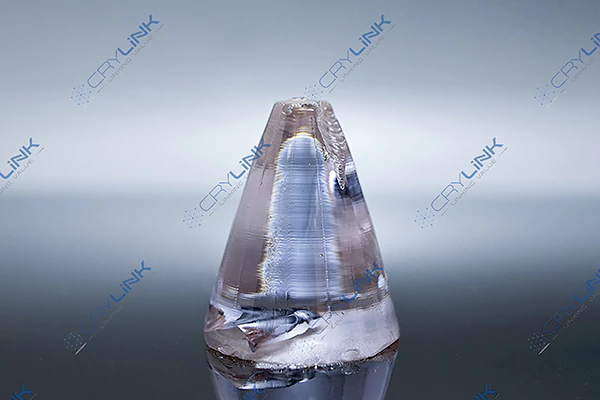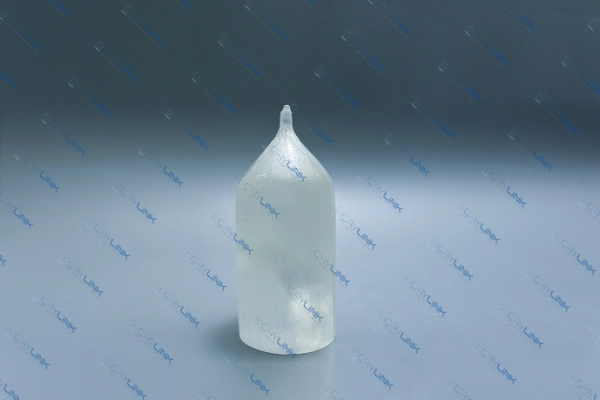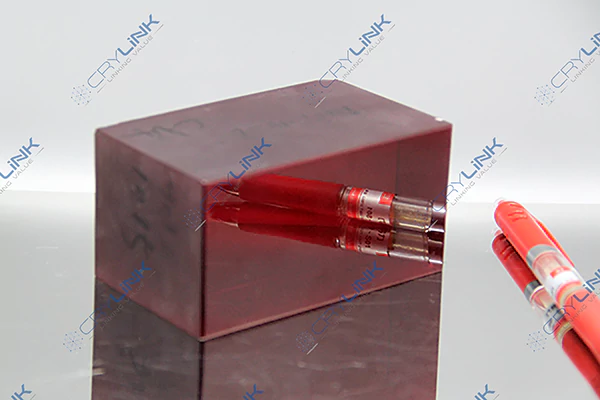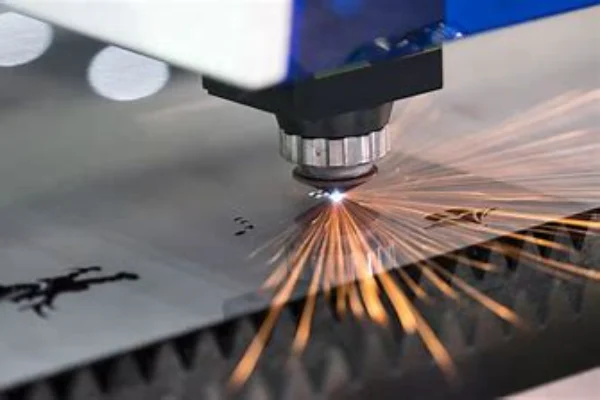Introduction
Solid-state lasers have revolutionized the world of optics and photonics. These lasers are distinguished by their ability to produce high-energy beams, making them indispensable in various applications ranging from medical surgeries to industrial machining. At the heart of these lasers lie the crystal materials that define their performance and efficiency. In this article, we delve deep into the world of crystal materials used in high-energy solid-state lasers, focusing on their characteristics and applicability.

Understanding Solid-State Lasers
Before diving into the specifics of the crystal materials, it’s essential to have a brief understanding of solid-state lasers. These lasers utilize a solid medium, typically a crystal or glass, doped with ions that provide the required energy levels for laser operation.
Nd:YAG – The Gold Standard
The realm of laser technology has witnessed numerous innovations, but few have been as transformative as the Neodymium-doped Yttrium Aluminum Garnet, commonly known as Nd:YAG. This laser crystal stands as a testament to the perfect blend of science and engineering, offering unparalleled performance and versatility.
One of the standout features of Nd:YAG is its remarkable robustness. In the demanding world of lasers, where precision and stability are paramount, Nd:YAG consistently delivers. Its resilience ensures that it can withstand varied operating conditions, making it a favorite among professionals in diverse fields.
Another attribute that sets Nd:YAG apart is its high thermal conductivity. This property ensures that the crystal can efficiently dissipate heat, allowing it to maintain its performance even under intense operations. This thermal stability is crucial, especially in applications where the laser is continuously in use, as it prevents the crystal from getting damaged due to overheating.
The broad tuning range of Nd:YAG further accentuates its versatility. While its primary lasing wavelength stands at 1064 nm, the crystal’s unique properties allow it to be frequency-doubled. This process produces a brilliant 532 nm green beam, expanding its utility in various applications that require different wavelengths.
Speaking of applications, the Nd:YAG laser’s adaptability is genuinely commendable. In the medical field, it has become an invaluable tool for treatments, offering precision and minimizing damage to surrounding tissues. Surgeons and medical professionals worldwide rely on its accuracy for procedures that demand the utmost care.
Beyond medicine, Nd:YAG lasers have carved a niche in the industrial sector. Their ability to drill with pinpoint accuracy has revolutionized manufacturing processes. Additionally, their engraving capabilities have found applications in creating intricate designs on various materials, from metals to ceramics. The high peak power of Nd:YAG lasers also makes them ideal for pulsed operations, where short bursts of high-intensity light are required.
In conclusion, the Nd:YAG laser crystal, with its myriad of exceptional properties, has rightly earned its title as the “Gold Standard” in the world of lasers. Its combination of robustness, thermal stability, and versatility ensures that it will remain a cornerstone in laser technology for years to come.

Yb:YAG – The Modern Choice
In the ever-evolving world of laser technology, Ytterbium-doped Yttrium Aluminum Garnet, commonly known as Yb:YAG, has emerged as a frontrunner. This laser crystal, with its unique properties, is setting new standards and pushing the boundaries of what’s possible in various applications.
One of the standout features of Yb:YAG is its broader absorption bandwidth, especially when compared to its counterpart, Nd:YAG. This broader bandwidth translates to a more efficient absorption of light, making Yb:YAG particularly well-suited for diode pumping. Diode-pumped solid-state lasers are known for their efficiency, and with Yb:YAG at their core, they achieve unparalleled performance metrics.
The primary lasing wavelength of Yb:YAG hovers around 1030 nm. This specific wavelength range offers a balance between penetration depth and resolution, making it ideal for a host of applications, especially in the industrial sector.
Speaking of applications, the rise in popularity of Yb:YAG lasers in materials processing is noteworthy. As industries move towards more refined manufacturing processes, the demand for precision tools has skyrocketed. Yb:YAG lasers, with their precise cutting abilities, have become the tool of choice for thin-film scribing. Thin films are pivotal in modern electronics, and the ability to scribe them accurately is crucial for the production of high-quality devices.
Furthermore, the world of manufacturing is not just about scribing; precision cutting is equally vital. Whether it’s cutting intricate designs or shaping materials to exact dimensions, Yb:YAG lasers excel. Their high efficiency ensures that they deliver consistent performance, reducing wastage and ensuring that every cut is precise.
Another significant advantage of Yb:YAG lasers is their compatibility with diode pumping. Diode pumping offers several benefits, including increased efficiency, longer operational life, and reduced cooling requirements. The natural compatibility of Yb:YAG with diode pumping means that systems built around this crystal can leverage all these advantages, making them more sustainable and cost-effective in the long run.
In the grand tapestry of laser technology, Yb:YAG stands out as a beacon of modern innovation. Its unique characteristics, combined with its wide range of applications, ensure that it will remain at the forefront of laser technology, shaping the future of industries and research.

Ti:Sapphire – The Broadband Champion
In the dynamic landscape of laser crystals, Titanium-doped Sapphire, commonly referred to as Ti:Sapphire, has carved a unique niche for itself. Its distinct properties and unmatched versatility have earned it the title of the “Broadband Champion” among laser aficionados and professionals alike.
One of the most remarkable features of Ti:Sapphire is its ultra-broadband tunability. Unlike many other laser crystals that operate within a narrow wavelength range, Ti:Sapphire boasts the ability to produce laser light spanning from 660 nm to an impressive 1050 nm. This vast spectrum allows for a plethora of applications and experiments that would be challenging, if not impossible, with other laser crystals. Its ability to cover such a broad range ensures that researchers and technicians can fine-tune their lasers to the exact wavelength required for their specific tasks, offering unparalleled flexibility.
Beyond its tunability, Ti:Sapphire’s efficiency is another factor that sets it apart. The crystal’s inherent low quantum defect translates to minimal energy loss during operations. In the world of lasers, where every joule of energy counts, this high efficiency ensures that Ti:Sapphire lasers deliver optimal performance with reduced energy consumption. This not only makes them more environmentally friendly but also more cost-effective in the long run.
When it comes to applications, Ti:Sapphire lasers are synonymous with speed and precision. Their ability to produce ultrafast pulses has made them indispensable in the realm of femtosecond pulse generation. These ultra-short pulses are crucial in capturing rapid phenomena, allowing scientists to study events that were previously beyond the reach of traditional lasers.
Moreover, the world of spectroscopy has greatly benefited from Ti:Sapphire lasers. Their broad tunability and high precision make them ideal for studying the interaction between matter and electromagnetic radiation, leading to breakthroughs in various scientific fields.
Lastly, in the domain of microscopy, Ti:Sapphire lasers have revolutionized multiphoton microscopy. Their efficiency and precision allow for deeper tissue penetration without causing damage, enabling researchers to obtain clearer images and gather more accurate data.
In conclusion, Ti:Sapphire’s unique blend of ultra-broadband tunability, high efficiency, and versatility in applications solidifies its position as a true champion in the world of laser technology. Its contributions to science and industry are immeasurable, and its potential for future innovations remains boundless.

Comparative Analysis
In the intricate world of laser technology, the choice of crystal material plays a pivotal role in determining the efficiency, versatility, and applicability of the laser system. Each crystal, with its unique properties, caters to specific needs, and understanding these nuances is essential for optimal performance.
Nd:YAG, often referred to as the “Gold Standard,” is a versatile powerhouse. Its robust nature, combined with a broad tuning range, makes it a preferred choice for diverse applications. Whether it’s medical procedures, industrial engraving, or scientific research, Nd:YAG consistently delivers reliable results. Its adaptability ensures that it remains a favorite across multiple sectors, from healthcare to manufacturing.
On the other hand, Yb:YAG stands out for its unparalleled efficiency. Its broader absorption bandwidth, especially when compared to Nd:YAG, allows for more effective diode pumping, leading to higher overall efficiency. This makes Yb:YAG an ideal candidate for applications that demand continuous laser operation, such as materials processing and precision cutting. Its consistent performance ensures minimal energy wastage, making it both cost-effective and environmentally friendly.
Ti:Sapphire, the “Broadband Champion,” brings to the table its exceptional tunability. Capable of producing laser light across a vast spectrum, from 660 nm to 1050 nm, it offers unmatched flexibility. This broad range is especially beneficial for ultrafast and spectroscopic applications. Researchers and scientists favor Ti:Sapphire for its ability to capture rapid events and provide detailed spectral analysis. Its contributions to femtosecond pulse generation and multiphoton microscopy are testament to its superior capabilities.
In essence, the choice between Nd:YAG, Yb:YAG, and Ti:Sapphire boils down to the specific requirements of the application. While Nd:YAG offers broad applicability, Yb:YAG shines in continuous operations, and Ti:Sapphire excels in ultrafast and spectroscopic tasks. Making an informed decision based on these characteristics ensures that the laser system performs at its peak potential.

The Future of Laser Crystal Materials
As technology advances, the demand for more efficient and versatile laser systems will grow. Researchers are continually exploring new dopants and host materials to meet these demands. The future promises even more exciting developments in the realm of solid-state laser crystal materials.
Conclusion
High-energy solid-state lasers have transformed numerous industries, and the crystal materials play a pivotal role in their operation. Understanding the characteristics and applicability of these materials, such as Nd:YAG, Yb:YAG, and Ti:Sapphire, is crucial for harnessing their full potential. As we look forward to the future, it’s evident that the journey of discovery and innovation in this field is far from over.
FAQs
- What is the primary lasing wavelength of Nd:YAG?
- The primary lasing wavelength of Nd:YAG is 1064 nm.
- Why is Yb:YAG considered more suitable for diode pumping?
- Yb:YAG has a broader absorption bandwidth compared to Nd:YAG, making it more efficient for diode pumping.
- Which laser crystal is known for its ultra-broadband tunability?
- Titanium-doped Sapphire (Ti:Sapphire) is known for its ultra-broadband tunability.
- What are the primary applications of Ti:Sapphire lasers?
- Ti:Sapphire lasers are widely used in femtosecond pulse generation, spectroscopy, and multiphoton microscopy.
- How do solid-state lasers differ from other lasers?
- Solid-state lasers utilize a solid medium, typically a crystal or glass, doped with ions for laser operation, unlike gas or dye lasers.

Frank
Frank graduated from the University of Shanghai for Science and Technology, majoring in optics. As a technical engineer at Crylink Company, he deeply understands crystal materials and laser components.
Related Video(s) with this Article
Related Product(s) with this Article
Related Application(s) with this Article
